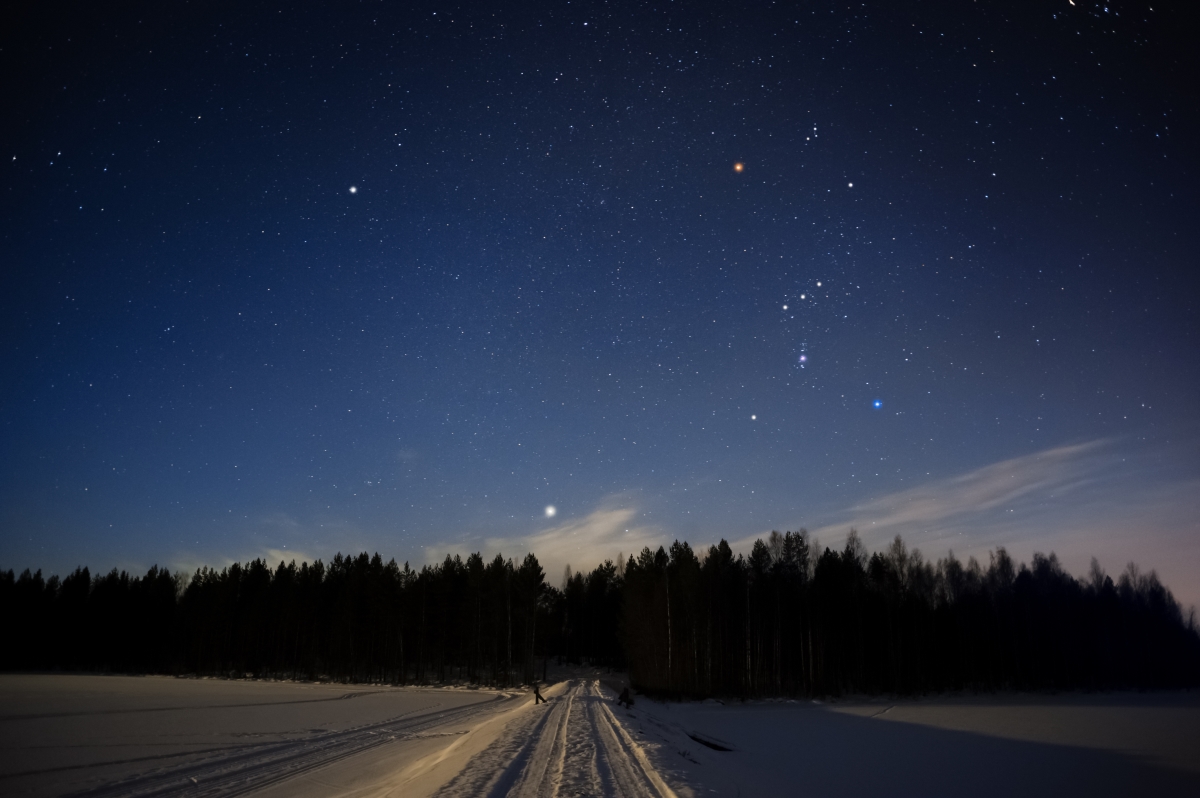A
A
A
The night sky in late January 2021 has a lot to offer stargazers in the northern hemisphere. Keep an eye straight south for the moon to clear the horizon on January 21, and once Orion is visible, look straight up. Carefully reviewing the angles, you will be able to spot Mars easily at 2 o’clock, and at 4 o’clock from Mars you will see Uranus.
The close passing of the moon and Mars is an ideal time to study the far distant planet Uranus. Because it’s so far out, this little planet can get lost in the vastness of the sky. Try to get out on the 21st or 22nd at the latest; by the 23rd, the angles will not be as easy to read and the moon will be at three-quarters.
Read More »
Where the Light Breaks
On January 23, 2021, Aldebaran of the Taurus constellation will be easy to spot as you look to the southeast. The moon will be more than half full by this point, and it’s a wonderful time to study the craters on the terminator line. Additionally, you can easily see the northern plane, Mare Serenitatis, near the top of the moon. Just below that and to the right is the Sea of Tranquility, the landing site of Apollo 11.
While the full moon has long held fascination for humans, it’s important to note that it can make stargazing a serious challenge. Whenever possible, try to get out and stargaze when the moon is either at one quarter wax or one quarter wane. The more light from the moon filling up the sky, the harder it is to see the stars or to see any meteor activity at all.
Get Out Early If You Can
In addition to getting to study the moon, easily see Mars and even spot Uranus, this is a good week to see Mercury. Because Mercury is between the earth and the sun and the orbit is only 88 of our days, it can be hard to spot this tiny planet. For best viewing, wait until the sun has been down for 45 minutes before getting out to view this tiny planet. Look for the brightest start to the southwest. There may be a lot goin on over there, so look for a clear light with no twinkling to be sure.
Or Get Up Early to View Venus!
If you enjoy studying the moon, you may want to stay up until it sets, which is within two hours of midnight in the northern hemisphere in late January 2021. However, if you can get up and get out before sunrise, you’ll see Venus coming up as the sky brightens. Be aware that the window of time that Venus is visible will get shorter as the days get longer, so try to check out this brightest morning star in the winter. She may also be visible to the west in the twilight.
Tools to Use
Consider putting a moon map to use when studying the moon in the winter. Because cold air holds less moisture, the clarity of craters and the plains will be much easier to spot on cold nights.
However, it’s critically important that stargazers take care when they’re out as the sun is setting or rising. Binoculars and telescopes won’t protect your eyes if you try to focus on light that is too bright. Wait until the sun has been down for at least 30 minutes before trying to study the angles between the moon, Mars, and tiny Uranus in late January 2021.






